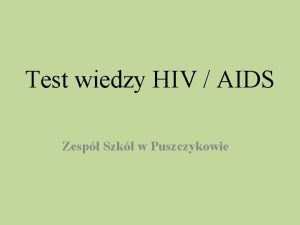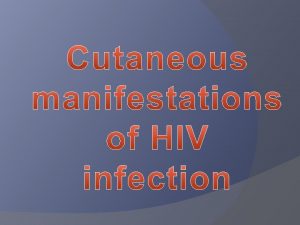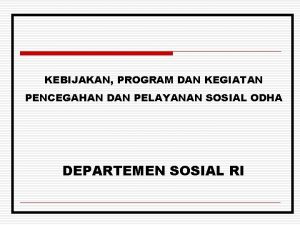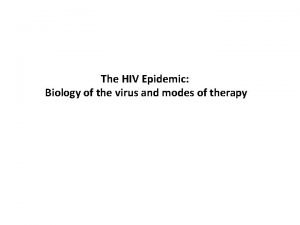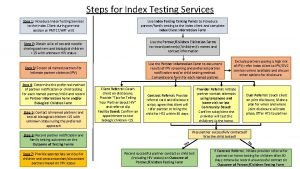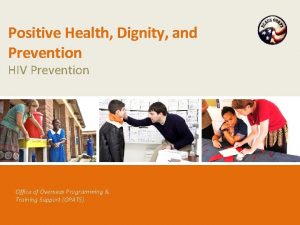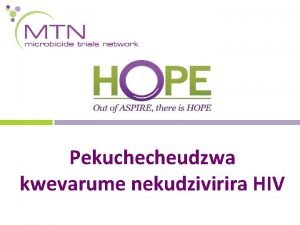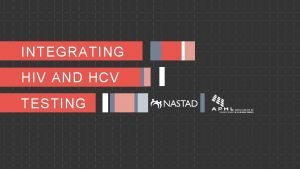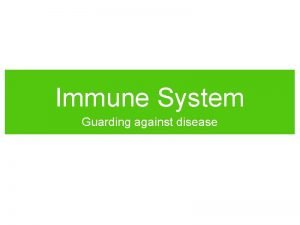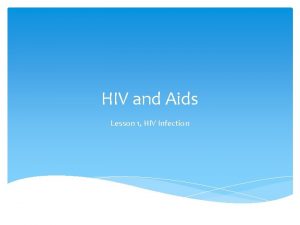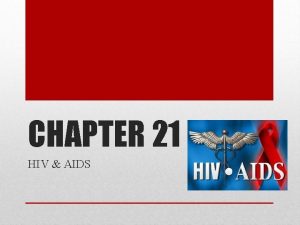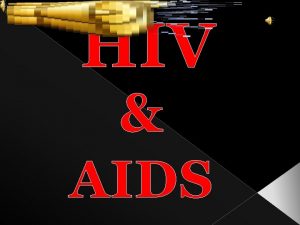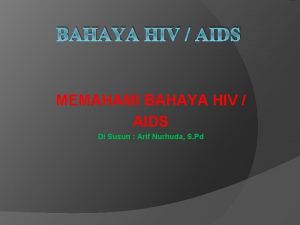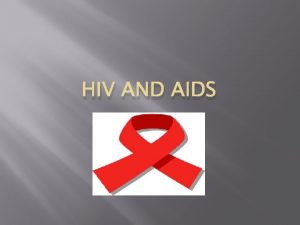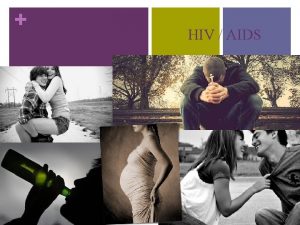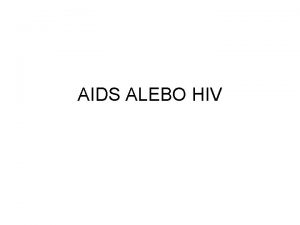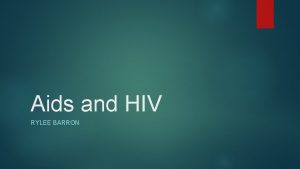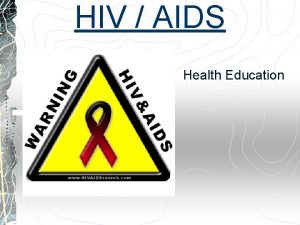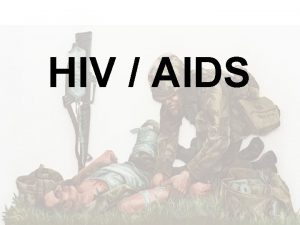Chapter 25 Lesson HIV AIDs HIV AIDs In














- Slides: 14

Chapter 25 Lesson HIV & AIDs

HIV / AIDs • In July 1981, an outbreak of a rare form of skin cancer known as Karposi’s sarcoma was reported.

HIV / AIDs • About a year later, the CDC labeled the disease Acquired Immune Deficiency Syndrome (AIDs)- a disease in which the immune system is weakened. • In 1983 the Human Immunodeficiency Disease (HIV)- a virus that attacks the immune system, was confirmed the cause.

Teens at Risk • Overall the rate of new cases of HIV has fallen slightly • There has been no decline of infections among youth from 13 to 24 yrs old. • Teens have the fastest growing rates of HIV infection. • HIV can be undetected for years. It is only after the virus destroys the immune system that death occurs. • Many adults currently dying from AIDs were infected in their teens

HIV and the Human Body • HIV is a virus that attacks your immune system, which is made up of millions of cells that help fight against infection and disease. One of the most important of these infection-fighting cells is called the T-helper cell. 1 When HIV enters the body, the virus infects the cells and copies its own genetic code into the cell's DNA. The T-cell is then "programmed" to create new copies of HIV (referred to as replication). The new viruses are released from infected cells into the blood and go on to infect and destroy other cells. As cells are attacked and destroyed by HIV, the immune system becomes less able to fight infection and disease. 1 Without treatment, the number of cells will most likely go down and the immune system will become less able to fight certain infections and cancers. These infections are called opportunistic infections (OIs). Once the immune system becomes seriously damaged or weakened, HIV infection has progressed to AIDS (Acquired Immunodeficiency Syndrome). 1

Definitions • Opportunistic infection- are infections that occur when you do not have a healthy immune system • T-cells- are part of the immune system that help identify and destroy pathogens


How HIV is Transmitted • HIV lives inside cells and body fluids. • Does not survive well in air or surfaces such as toilets, food or telephones • HIV can be transmitted from an infected person to an uninfected person only in certain ways…through blood, semen, vaginal secretions, and breast milk.

Greatly Reduce your Chances of HIV Infection • Abstaining from sexual activity • Avoiding injected drug use

Sexual Intercourse • HIV can be transmitted through any form of sex • During intercourse, HIV can enter the body through any small cuts in the body • STDs that causes sores (chlamydia, syphilis, genital herpes, increase the risk.

Sharing Needles • An infected person with HIV injects drugs, the needle or syringe can become contaminated with the person’s blood. • Anyone who uses the same needle can inject the HIV directly into their bloodstream.

Mother to Baby • An infected mother can pass infection to baby through the umbilical cord or during birth. • Because breast milk can contain HIV, a baby can receive HIV while nursing.

Review Questions 1. Describe the HIV / AIDS epidemic in the teen population. 2. How does HIV attack the immune system? 3. How is HIV transmitted? 4. Teens have a high rate of contracting HIV, yet more adults from 25 -44 yrs old die from AIDS. What characteristic of HIV / AIDS causes this discrepancy?

Review questions continued… 5. Analyze the relationship between unsafe behaviors, refusal skills, and the risk of HIV.
 Chapter 25 sexually transmitted infections and hiv/aids
Chapter 25 sexually transmitted infections and hiv/aids Chapter 24 sexually transmitted diseases and hiv/aids
Chapter 24 sexually transmitted diseases and hiv/aids Name the five lesions associated with hiv/aids chapter 17
Name the five lesions associated with hiv/aids chapter 17 Test wiedzy o hiv i aids
Test wiedzy o hiv i aids Causative organism of hiv/aids
Causative organism of hiv/aids Kasus hiv aids
Kasus hiv aids Chapter 1 lesson 1 your total health
Chapter 1 lesson 1 your total health Triệu chứng nhiễm hiv
Triệu chứng nhiễm hiv Where did hiv come from
Where did hiv come from Hiv index testing steps
Hiv index testing steps Snars 1.1 prognas
Snars 1.1 prognas Phdp in hiv
Phdp in hiv Chii chinonzi hiv
Chii chinonzi hiv Window period hiv
Window period hiv Dot
Dot



